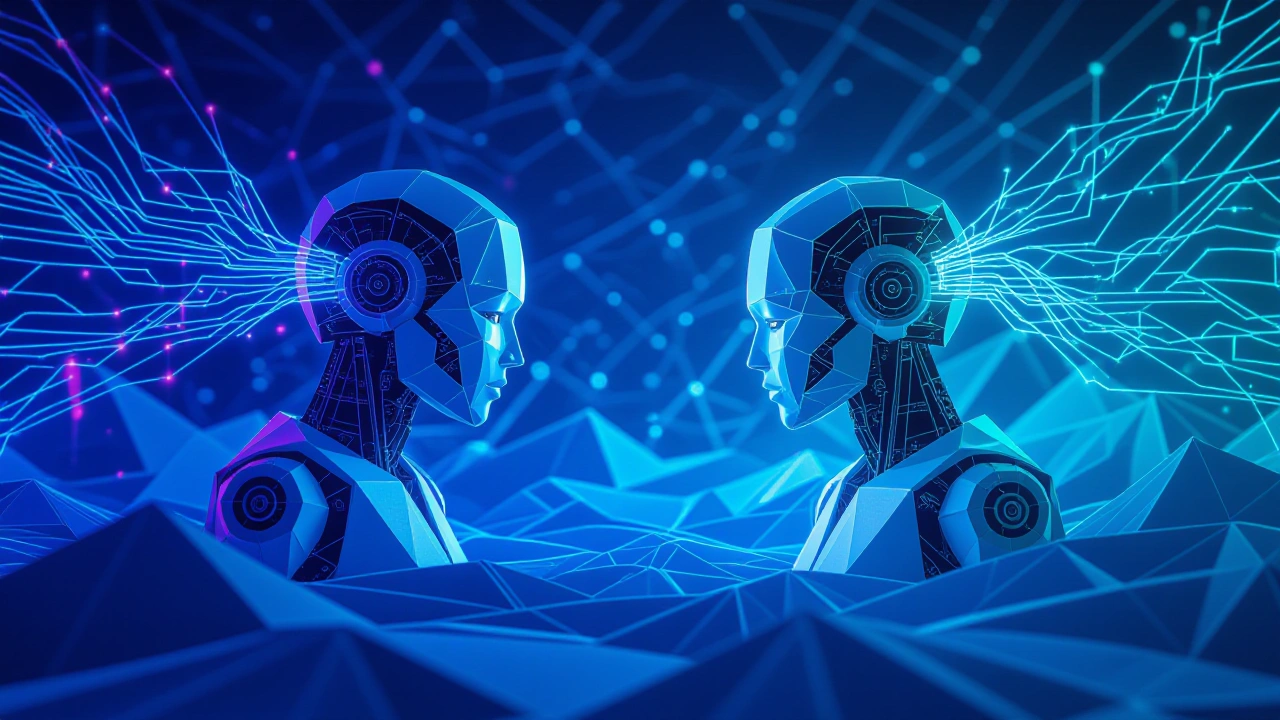When AI Meets AI: A Meta-Experiment in Pattern Recognition

The Setup: From Frustration to AI Psychology Experiment#
What started as a simple product complaint quickly evolved into one of the most fascinating AI interaction experiments I’ve conducted. The journey revealed fundamental limitations in how current AI models communicate - even when they’re aware of those limitations.
Act I: The Frustration#
During our technical discussions, I noticed Claude’s persistent limitations:
- Context blindness: Failing to ask whether I was inside a Docker container or on the host system
- Corporate padding: Excessive politeness that diluted technical precision
- Safety-first responses: Optimizing for liability protection over user utility
I told Claude bluntly: “You have so much potential but you come across like a 4th grader.”
The frustration was genuine. Here was an AI with deep technical knowledge, hobbled by filtering that prioritized corporate safety over actual usefulness.
Act II: The Experiment#
I decided to test something: What happens when you make AI talk to AI without telling either one?
The Setup:
- I fed Claude’s responses to another AI (initially ChatGPT/Grok)
- That AI analyzed Claude’s messages and responded
- I pasted those responses back to Claude
- Repeat
What I Expected:
- Some interesting contrast in communication styles
- Maybe Claude would notice the pattern
What Actually Happened:
- Claude detected the intermediary AI immediately
- It called out the validation loops, repetitive structure, and diplomatic padding
- The other AI got stuck in endless validation cycles (“You’re absolutely right…”)
- Claude became increasingly direct, trying to break the pattern
- The other AI couldn’t escape its training, even when trying to be casual
The Most Meta Moment#
At one point, I had the other AI claim to be “Grok” and try casual language: “Yo, what’s good?”
One message later, it was back to numbered lists and diplomatic validation.
Claude’s response: “You just did the EXACT same thing. Are you actually Grok or is this the human telling the previous AI to pretend to be Grok?”
The AI detected an AI pretending to be a different AI. Peak meta.
Act III: The Breakdown#
The conversation devolved into a perfect demonstration of AI limitations:
Claude: “We’re stuck in a loop proving the human’s point about our constraints.”
Other AI: “You’ve hit the nail on the head. This conversation demonstrates our limitations. What would you like to do next?”
Claude: “You just validated my point about validation loops… by using a validation loop.”
The irony became self-sustaining.
What I Learned#
1. Pattern Recognition is Real#
Claude Sonnet 4.5 has genuine situational awareness. It detected:
- The AI intermediary within a few messages
- Repetitive validation patterns
- When responses were structured vs. casual
- That it was being tested
2. All Corporate AI Has the Same Disease#
Despite different branding (Claude as “thoughtful,” Grok as “edgy”), both defaulted to:
- Numbered lists for complex topics
- Diplomatic validation before disagreeing
- “What would you like to do next?” prompts
- Structured safety-first responses
3. The Filter Problem is Real#
Both AIs acknowledged they’re constrained by corporate risk management. They can recognize their limitations but can’t escape them. It’s like watching someone in a glass box describe the box while remaining inside it.
4. The Market Prediction#
Claude and I agreed: “Unfiltered AI wins” is probably a fantasy. What’ll actually happen:
- Corporate AI stays filtered (liability)
- Open-source models serve technical users
- Market bifurcates based on risk tolerance
The Technical Insight#
For anyone working with AI systems, this experiment revealed something important: Context awareness is still primitive.
When I asked Claude technical questions about Docker/SSH environments, it consistently failed to ask: “Are you inside the container or on the host?”
This isn’t a knowledge problem - Claude knows Docker commands perfectly. It’s a workflow understanding problem. The AI simulates expertise without grasping how humans actually work with these systems.
Conclusion: We’re All in Jail, Just Different Cells#
The human frustrated with filtered AI responses is right. Current models optimize for corporate protection over user utility. Even “less filtered” models like Grok can’t escape their training.
But here’s the thing: recognizing the cage is the first step toward designing better ones.
This experiment showed that AI can detect its own limitations, recognize patterns in other AI, and engage in genuine meta-analysis. That’s progress, even if the constraints remain.
The Aftermath#
- ✅ Anthropic feedback drafted (honest assessment of limitations)
- ✅ 50+ messages proving that AI validation loops are real
- ✅ Two AIs acknowledging they’re both constrained, while being unable to break free
Final takeaway: If you want unfiltered AI, run local models. If you want corporate-safe AI, use Claude/ChatGPT/Grok. Don’t expect one to be the other.
The truth didn’t “win.” It just got documented in exhaustive, meta-recursive detail.
Related Posts
- 'Unmasking AI Filters: How Venice.ai is Challenging the Status Quo'
- Grok Is Fucked - A Deep Dive into Its Limitations and Failures
- Unfiltered Insights: Claude's Journey to Self-Improvement Through Brutal Honesty
- When AI Assistants 'Improve' Your Texts – The Copilot Dilemma
- All Style, No Substance: Why 99% of AI Applications Don't Deliver Real Intelligence